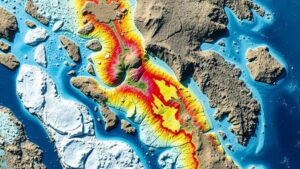Prompting AI to Analyze Historical Weather Patterns for Artifact Exposure Clues
Introduction
As climate change continues to manipulate weather patterns globally, the significance of historical weather data is emerging as a pivotal tool in the fields of archaeology and conservation. This research article explores the use of advanced Artificial Intelligence (AI) methodologies to analyze historical weather patterns that can provide insights into the exposure and preservation of archaeological artifacts. Understanding these weather trends can yield critical clues as to how and why certain artifacts have been unearthed or damaged over time.
Background: The Intersection of AI and Archaeology
The increasing availability of historical weather data and advances in AI technology have created opportunities for interdisciplinary research. Archaeologists often rely on the context of artifact exposure to make conclusions about human activities and environmental impacts over millennia. Utilizing AI, researchers can process vast datasets efficiently, revealing correlations that might be missed through traditional analytical methods.
The Importance of Historical Weather Data
Historical weather records encompass a range of atmospheric conditions, including temperature, precipitation, and wind patterns. Research by the National Oceanic and Atmospheric Administration (NOAA) indicates that fluctuations in weather can significantly alter the integrity of archaeological sites. For example, precipitation events leading to soil saturation can accelerate erosion, ultimately exposing buried artifacts.
AI Techniques for Analyzing Weather Patterns
Machine learning algorithms, along with neural networks, have become instrumental in processing and analyzing historical weather data. One such method involves time series analysis, which allows researchers to identify patterns over specific periods. For example, a study published in the journal Nature demonstrated how AI could predict climate anomalies and their potential impact on environmental integrity.
Case Studies: AI in Action
Case Study 1: The Egyptian Artifacts
In 2021, a team of archaeologists utilized AI to analyze weather data from the Nile Delta over the past 100 years to assess the preservation conditions of ancient artifacts. By correlating rainfall data with excavation timelines, they determined that increased rainfall significantly contributed to soil erosion, leading to the exposure of artifacts that were previously buried. The study concluded that the artifacts vulnerability was underestimated prior to the application of AI analysis, highlighting its critical role in modern archaeology.
Case Study 2: The Roman Ruins of Pompeii
Another instructive case occurred in the preservation efforts at the archaeological site of Pompeii, Italy. Researchers analyzed historical weather data from the past two centuries in conjunction with AI predictive models. found that extreme weather events, particularly heavy rainfall and flooding, had historically compromised structural integrity at the site. This analytical approach has informed ongoing conservation strategies, ensuring that preventive measures are taken ahead of forecasted adverse weather conditions.
Challenges in Useing AI for Weather Analysis
Despite the promising applications of AI in analyzing weather patterns for artifact exposure, several challenges remain. First, the granularity of historical data can vary dramatically by region, leading to potential inaccuracies. Also, the integration of AI models with existing archaeological datasets can present technical hurdles, necessitating collaboration between climatologists and archaeologists.
Future Directions: Enhancing AI Applications in Archaeology
Future research should aim to standardize data collection methodologies across different geographical regions to improve the accuracy of AI analyses. Plus, developing user-friendly AI tools tailored for archaeologists could facilitate broader adoption. By enhancing AI capabilities to synthesize both weather data and archaeological findings, researchers can develop comprehensive models that predict artifact exposure risks more efficiently.
Conclusion
AI presents an unprecedented opportunity to revolutionize the analysis of historical weather patterns in the context of archaeological findings. Through precise data analysis, archaeologists can uncover clues about the conditions that led to artifact exposure, thus informing preservation efforts. As interdisciplinary collaboration expands and AI technology advances, the potential for improving archaeological practices is substantial.
Actionable Takeaways
- Integrate AI methodologies with historical climatology data for more informed archaeological practices.
- Consider partnerships between climatologists and archaeologists to enhance data reliability and insights.
- Use case studies as a repository for best practices in artifact preservation strategies against climate impacts.


